halbe sachen, Tom Hardwick-Allan & Stanislava Kovalcikova
Galerie Khoshbakht, Cologne
by Haris Giannouras
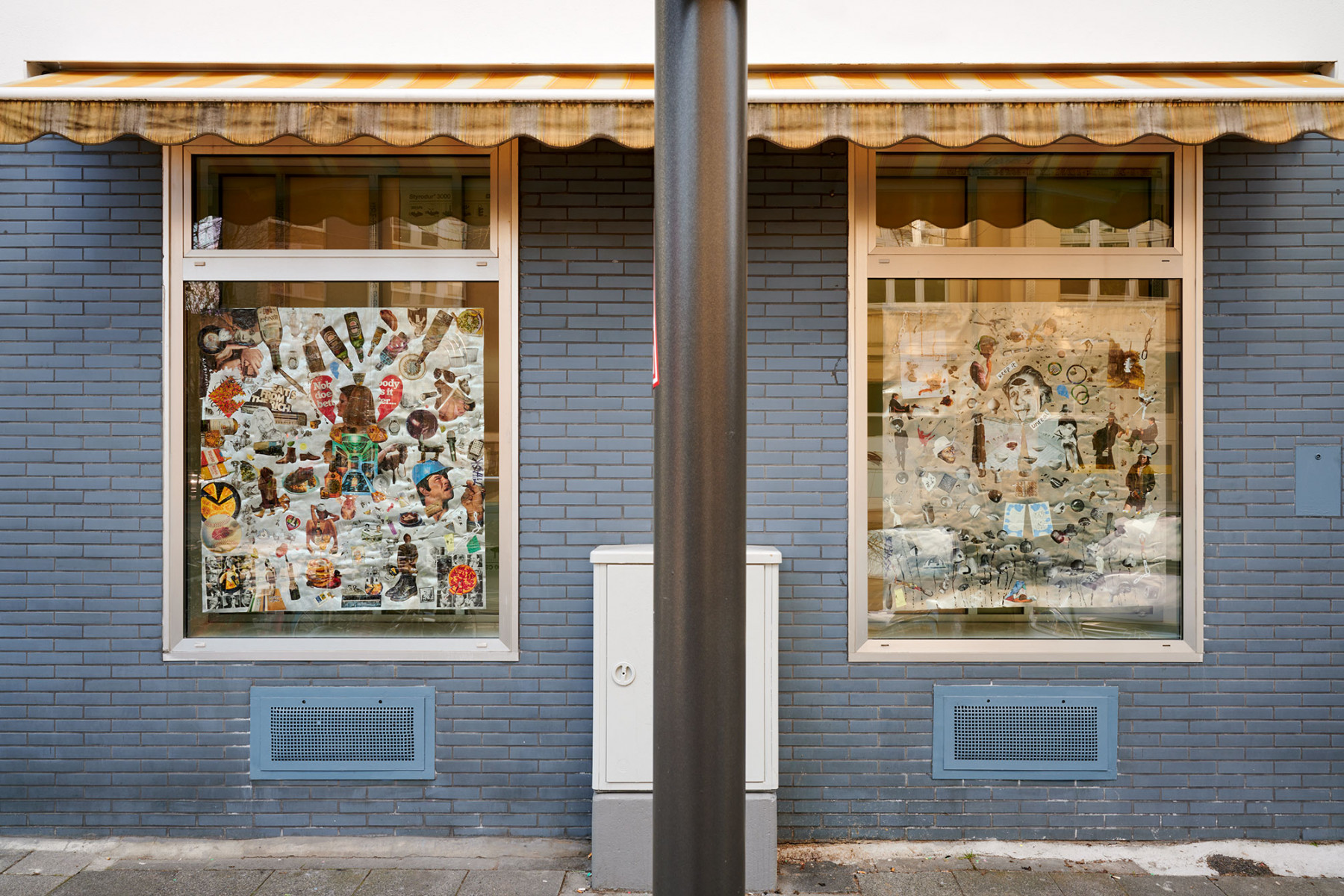
halbe sachen, Tom Hardwick-Allan & Stanislava Kovalcikova. Exhibition view. Galerie Khoshbakht, Cologne. 2023. Photography: Mareike Tocha
The House is Black is a 1963 documentary by Forugh Farrokhzad, shot inside a colony affected by leprosy located in the far northwest corner of Iran. Traversing the village of Bababaghi, the film depicts everyday scenes of children playing on the street, attending school, women going about their day at the market and men gathering at the town square. The work is underpinned by a distant voice, which comes across as a newscaster delivering the news of the day. The voice covers the whole film and includes quotes from the Bible, the Quran, and the artist’s own poetry. This was the only film Farrokhzad completed before her passing in 1967. Shortly after filming she adopted a child from that same community. The film was screened inside the exhibition halbe sachen, presenting work by Tom Hardwick-Allan and Stanislava Kovalcikova. Visitors sat on folding chairs or squatted on a floor made of upholstery foam. It played concurrently in both rooms of the exhibition.
The show ended a few months ago. I think it was quite helpful to spend time with the outcome of the works, to think through their staging, relationality, and their engagement with Farrokhzad’s black house.
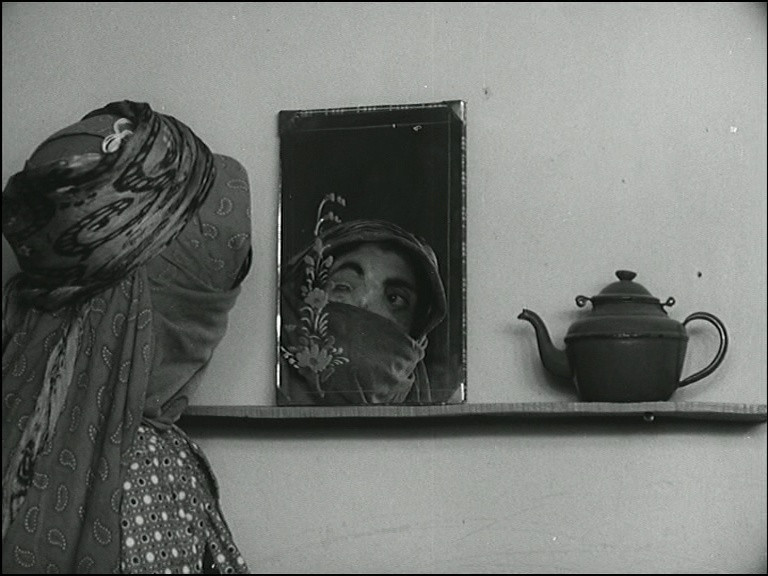
Forugh Farokhzad, The House is Black (film still), 1962.
Tom Hardwick-Allan works primarily with carved plywood which he scrapes, he cuts, he shapes and manipulates. I’ve come across his carvings a couple of times in recent years and had always approached them as cut-outs – the missing part of a double feature, one half of a pair of wings that has gone astray, or the link to a negative that was left out. I saw these pieces through the eyes of a prop-master who uses things as vessels and extensions to achieve his goal but perhaps is never content, tethered to a utilitarian framework. Paying closer attention and approaching them with more honesty, however, I realized I had been wrong and acted too rashly. These are not extensions, prosthesis, or handmade things. Their logic and claim of entry into the field of all things art isn’t based as much on their production as it relates to their status as objects, whether they are the outcome of the artist’s hand, the aftermath of the artist’s choice or the end result of an online purchase. They are misbehaved photograms spliced between a timekeeper and a snapshot, a still image and a clock; in other words, they are timely whilst inquiring into how to be timeless. These tree stumps are made as reliefs propped to produce. But they will never play host to a single sheet of paper. They are carved, painted and ready to ‘print.’ At the same time, they are formed by the structure of one of the most ancient manners to tell the time. The origin of time-telling through tree stumps goes far back, further than my remedial phenological knowledge would allow me to dig into.*
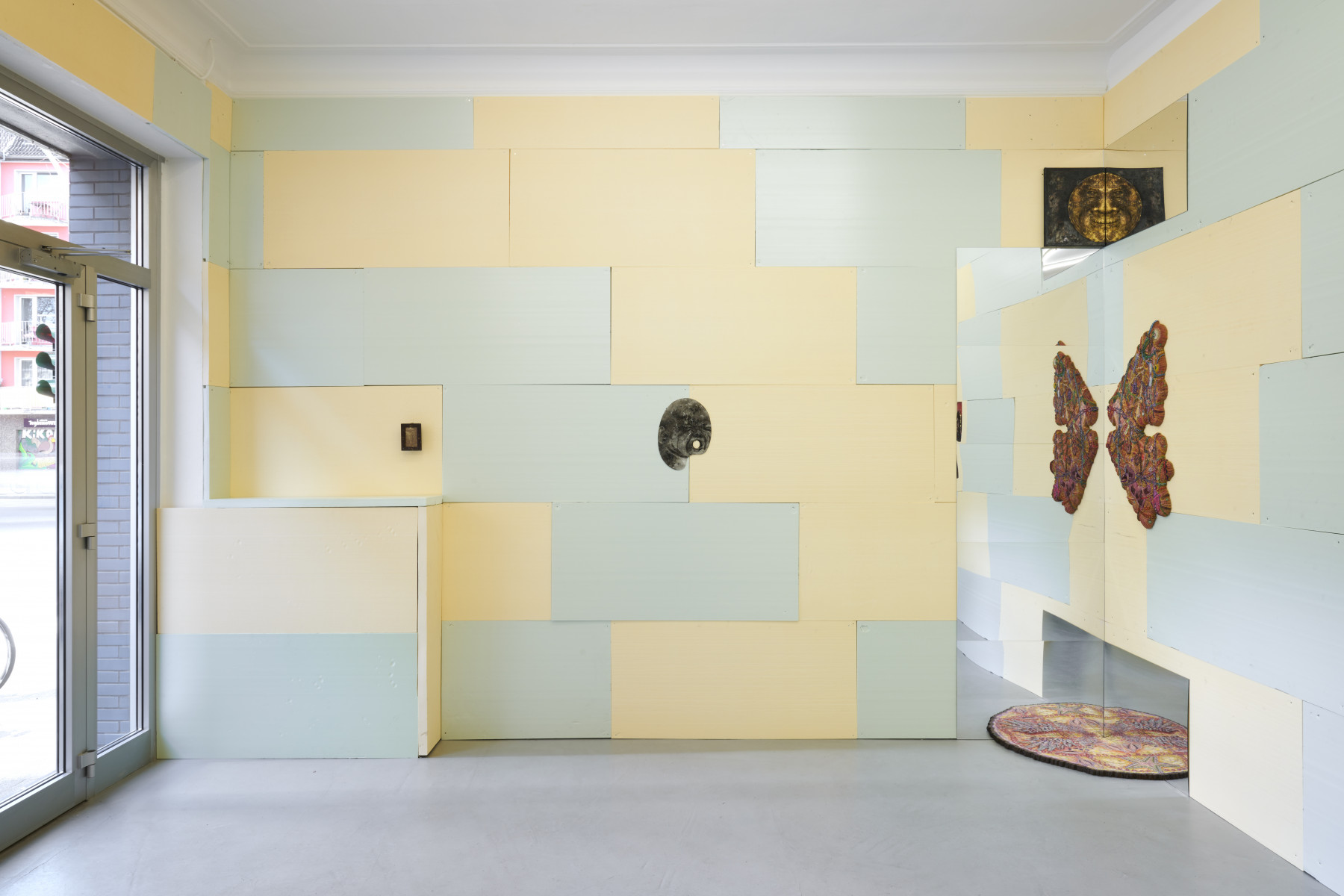
halbe sachen, Tom Hardwick-Allan & Stanislava Kovalcikova. Exhibition view. Galerie Khoshbakht, Cologne. 2023. Photography: Mareike Tocha
Stanislava Kovalcikova uses a lot of ornamental building blocks: masks, whimsy, pastoral poetry, distortion of reality, myths and fairytales, archetypes of many sorts. All the works on view are hanging on padded walls. Safeguarded, they managed to push the white gallery walls into the background. The thick upholstery foam covering the space is occasionally interrupted by mirrors that have been fixed with glue on the foam surface. One finds a painter’s palette made of foil and pigment on plastic, while modeling clay, oil, wax, cigarette and yak wool on fiberboard, glasses and hair, form/constitute more largely Kovalcikova’s body of works.
I find it sometimes challenging to dissect quotes, annotations, references, as they can quickly swerve away from where they were initially headed, and lead down unexpected paths. In particular when it comes to work made in the context of painting today, the way one looks back is often a slippery slope that can easily lead to reduction. The works Kovalcikova contributed to this constellation don’t burn out quickly in front of a citation manual, a game of imagistic references in order to gain purpose outside of the market; they don’t rely on painting’s claim for subversive power by repositioning history. The artist’s works here, I believe, are propositions; not the finished, worked-through and delivered product that is ‘painting on canvas’ that addresses histories and images, but a suggestion and a breakdown through a very personal point of view.
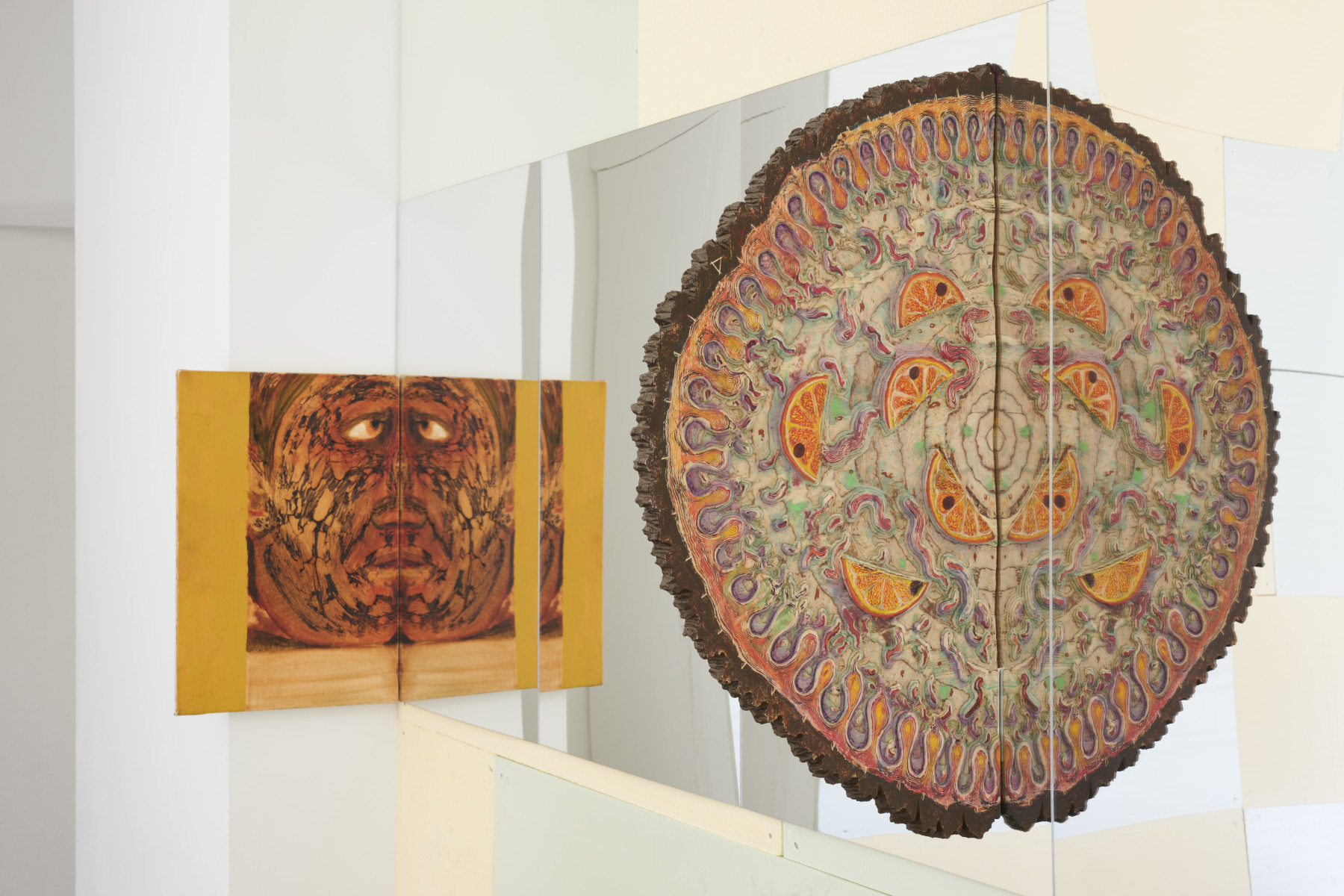
Left: Stanislava Kovalcikova, Never Pain to Tell thy Love, 2018. Right: Tom Hardwick-Allan, VD (back side), 2023. Photography: Mareike Tocha
halbe sachen, ‘half things,’ and a light shown from the periphery of history-writing; ‘half’ because things are never whole, only spliced. ‘Splicing’ means threading things together, interweaving, sewing harmony where discord arises.
The House is Black is as much about the material consequences of story-writing, as it is about daily life in a secluded community of people. As the viewer delves into an empathic approach of documentary filming, a genre known for its often violent gaze, the power and sensationalism of the symbol are emptied out all over the floor. Farrokhzad’s film becomes a story of a village like any other.
Telling half the story is the best way to remain truthful.
A bunch of kids joke around in class as the camera fades into black.
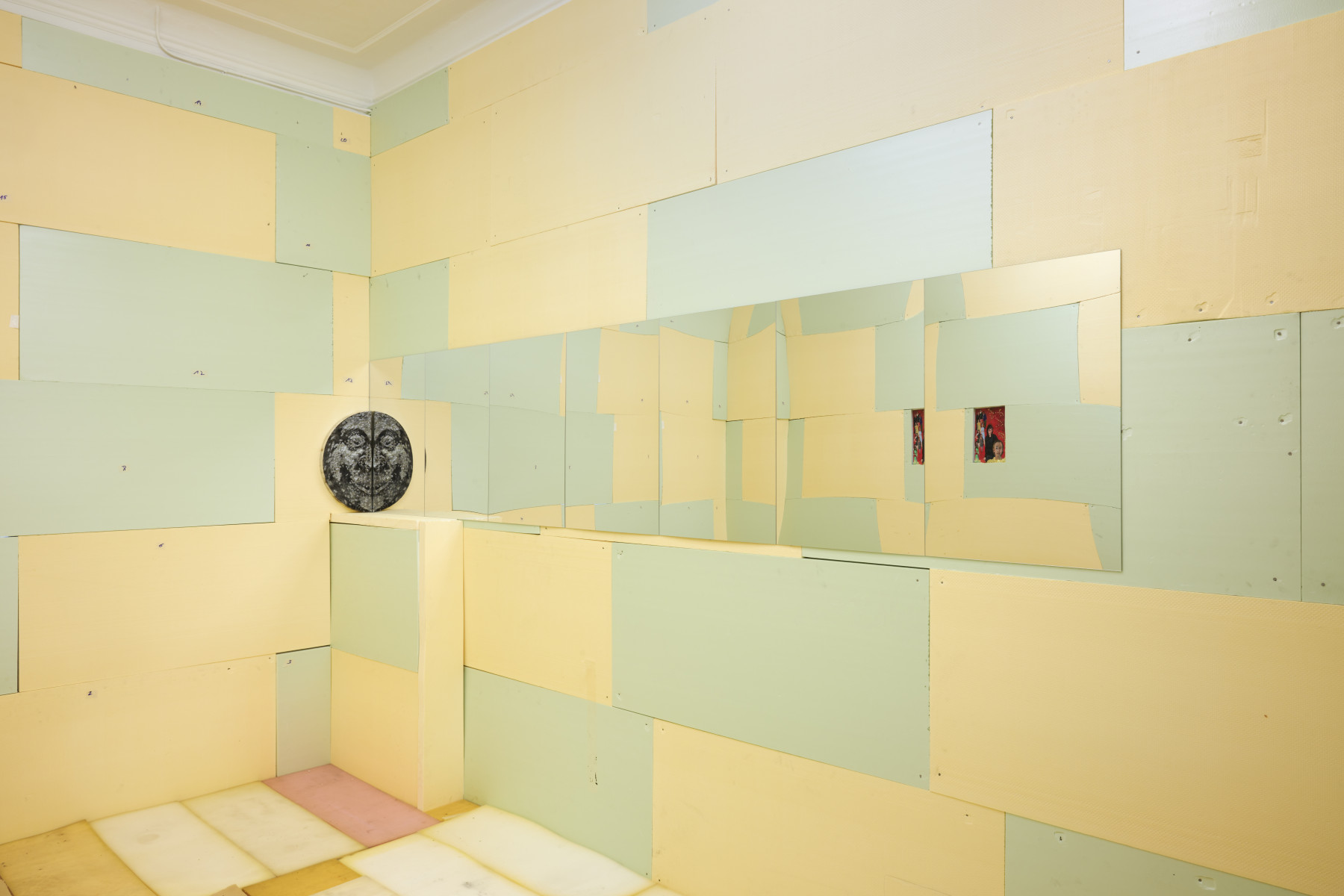
halbe sachen, Tom Hardwick-Allan & Stanislava Kovalcikova. Exhibition view. Galerie Khoshbakht, Cologne. 2023. Photography: Mareike Tocha
*Phenology refers to the timings of cyclical or seasonal elements and has used tree stumps throughout history to contextualize and pinpoint the life of things.
halbe sachen
Tom Hardwick-Allan & Stanislava Kovalcikova
25/02 – 21/04/2023
Galerie Khoshbakht
Jülicher Straße 24A
50 674 Cologne, Germany